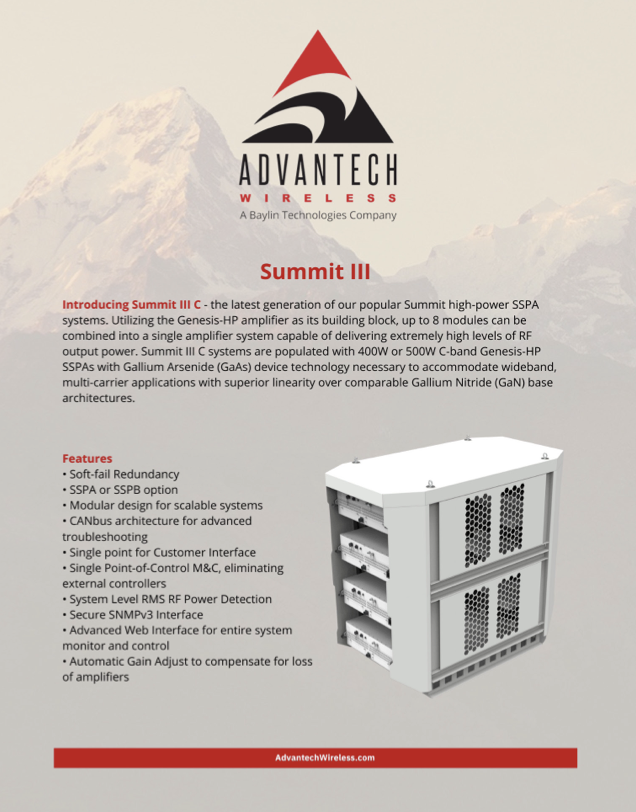AWS and SES partner to enable edge compute and Cloud
access on the battlefield
For the U.S. Department of Defense (DoD), not all missions are executed in environments where connectivity and communications are reliable and readily available. In scenarios where the DoD must operate at the remote edge, the crucial connectivity that mission success relies upon can often be limited or completely unavailable.

As a result, SES Space & Defense recently collaborated with AWS to empower defense customers on the Joint Warfighting Cloud Capability contract enabling access to low-latency, cloud-based applications securely in denied, disrupted, intermittent, and limited bandwidth (DDIL) environments.
AWS is leveraging SES’s multi-orbit, multi-band global satellite fleet to provide required connectivity to field-deployed AWS Modular Data Center (MDC) units to access critical applications and the exchange of mission-critical data in theater.
Recently, SES Space & Defense’s G. RamosCarr discussed with the Government Satellite Report how the company will be delivering MEO and GEO services at the edge for DoD missions, as well as explore the various DoD use cases, applications, and workloads that will benefit from infrastructure at the edge.
Government Satellite Report (GSR)
What use cases exist for AWS MDC?
Why would the DoD want to deploy these units to Denied, Disrupted, Intermittent, and Limited (DDIL) environments?

G RamosCarr
G RamosCarr
The DoD operates globally, meaning it has to maintain data sovereignty and comply with specific data classification requirements, both when deployed and at home, just to ensure that data is protected.
With the DoD’s transition from on-prem/hybrid solutions to commercial clouds that are approved for the U.S. government, the Department is going to be more reliant on remote edge computing environments in scenarios where comms aren’t as resilient as they are stateside.
Deploying in any environment where an adversary is present and negatively impacting communications — whether denying or disrupting — is a prime example of why a tool such as the AWS MDC is imperative. However, even in situations where bad weather is limiting connectivity, having different architectures like MEO with a GEO fallback, a good PACE plan is critical.
In any mission, you must always be able to operate, and that’s why there is a major need for those tools that are running in the cloud. Having the ability to deploy the most important data or tools at the edge is something the AWS MDC will help achieve at scale for a larger deployment, or a unit with a higher amount of data production.
No matter what scenario they end up in, with an AWS MDC, they’re able to continue operating just like they would be stateside when they were doing training.
GSR
Are there any particular applications or workloads that you think might be driving this need for infrastructure at the edge?
G RamosCarr
Imagery analysis is a perfect example. Also, IoT is another application that drives this need, especially when you need to pull a lot of different metrics on a regular basis. It’s fantastic to be able to import a big pool of data into a data lake in the cloud, which will allow users to leverage the computing resources of full data centers across the U.S.
But in a scenario where you might be offline for an hour, or a couple of days, you’re going to want to still have access to a subset of that full data set. You’ll want to be able to take the most important data and do some processing at the edge, and be able to leverage that intel that you just developed immediately.
GSR
If the DoD is deploying these units to the tactical edge, why would they need low-latency, high throughput satellite connectivity? What benefit or advantage would the DoD gain from connecting AWS MDC units?
G RamosCarr
An AWS MDC unit elevates what you can move out to the edge. The compute devices can now become resident in a forward operating base or in some other kind of deployed scenario. That gives users access to the most important data, housed locally at the edge.
However, an AWS MDC on the battlefield can’t compete against the ability of a data center back in the U.S. to be able to compute or consolidate information and process it. It’s not going to be able to do it on the same level.
This is why the military would want to connect AWS MDC units through high throughput, low latency, fiber-like connectivity. MEO satellite connectivity allows these workloads and systems to operate in a much more efficient manner — with some of the work being done at the edge, and other workloads in the cloud.
MEO, as far as cloud operations go, can provide a high throughput and low latency connection very similar to a traditional fiber optic connection. This incredibly high bandwidth, high speed connection can enable those services Before, users would have to use some kind of edge compute because of their higher-latency GEO link, or they would have to reduce the amount of throughput and the amount of data that they were sending back, because of the reduced capability of the GEO link and the latency. A low latency MEO connection enables a whole new world where practically anything can be transmitted quickly and with minimal latency.
GSR
It was recently announced that SES Space & Defense was selected by AWS to provide connectivity to the AWS MDC units. Why was SES Space & Defense a good fit for this?
G RamosCarr
We’ve had a lot of great engagements and have a great working partnership with AWS, and we’ve supported them on a number of different opportunities. I think we have a differentiated offering — owning both a GEO and a MEO fleet.

Obviously, there’s a value to every satellite connection, especially when you have zero connectivity. But us being able to bring a resiliency plan to them, and it being relatively turnkey for them, has probably been the biggest differentiator. We’re able to ensure that the military has connectivity — whether it be MEO or GEO connectivity options.
Going further, what MEO enables — as far as cloud operations — is so much more advanced that what the military is going to get on other constellations. The speed, capacity, and latency are second to none. We also have the ability to provide an SLA and ensure that dedicated connectivity is up and available, when that isn’t always the case with other services.
GSR
SES’s O3b mPOWER next-generation MEO service will soon be available for the DoD. How can this service benefit the DoD? What new functionality or capabilities will it enable for the military?
G RamosCarr
I think O3b mPOWER really opens the door for scalability on our side. We’ve been able to show a differentiated capability with 10 beams per satellite. There is also great flexibility that O3b mPOWER is going to bring to the table, and inherent security features that come with that constellation.
It’s going to open the aperture as far as being able to more successfully deploy our assets to support our warfighters.

David Pesgraves
Author David Pesgraves is a Staff Writer for GovSat Report, in addition to several other online publications dedicated to defense, military, and federal government agency technologies.
To read more about how SES Space & Defense and AWS will assist the U.S. Department of Defense, select this direct link...
This article, AWS and SES Partner to Enable Edge Compute and Cloud Access on the Battlefield, first appeared on GovSat and is republished with permission of SES Space & Defense and GSR.



